
Section E New Testament
Chapter 46 - Western Wall Shops
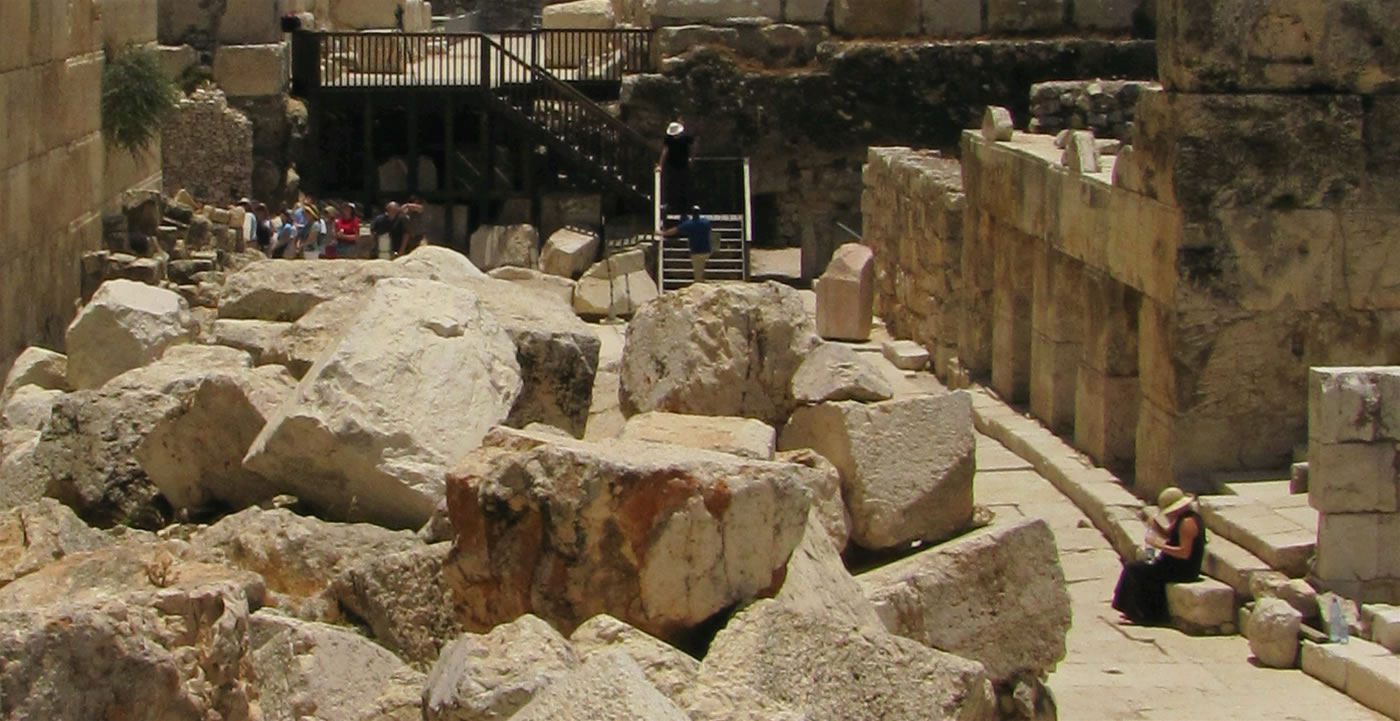
Shops along the Herodian Street can be seen to the right of the curb. The lintels (top stone over the doorways) of these shops provided support for Robinson’s Arch, which in turn supported the staircase that led to the southwestern gate of the Temple Mount.
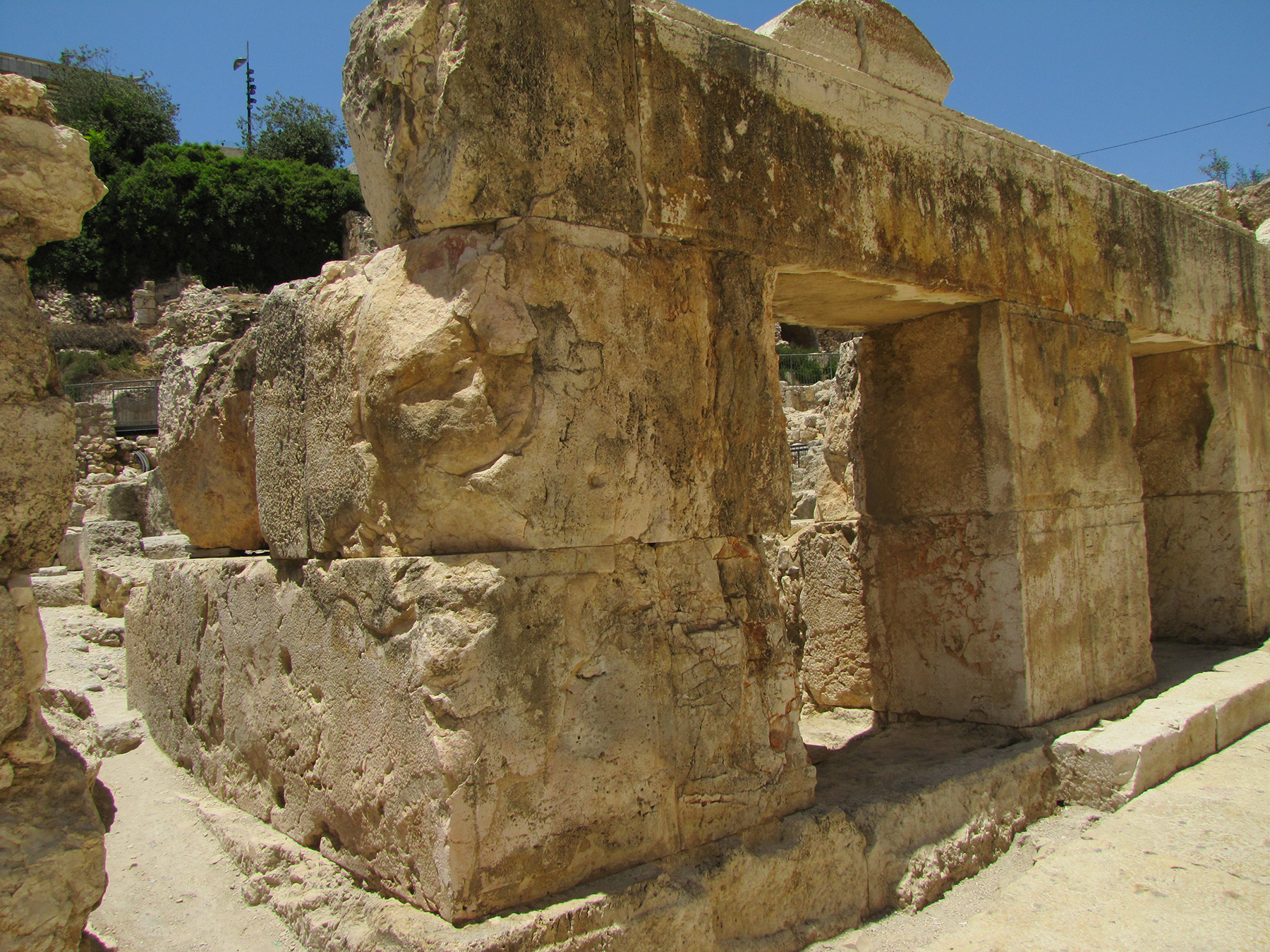
A close up of the front of the shops sitting along the Herodian road. Notice the nicely cut ashlar stones that formed the door jambs and supported the lintels above the doorways. This street was lined with shops on both sides.
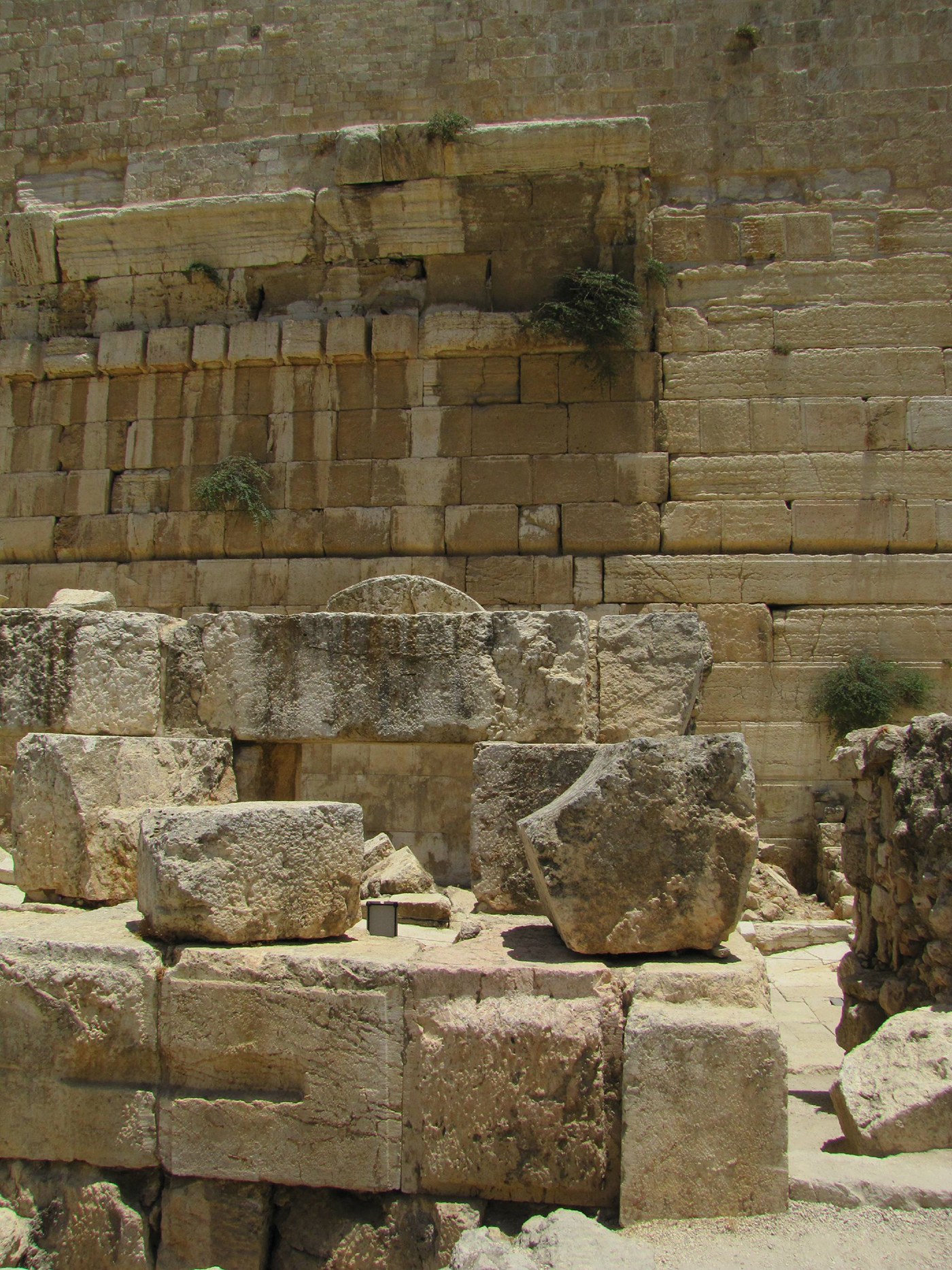
A view of the shops from the back side (the Upper City side), with Robinson’s Arch in the background on the Western Wall.
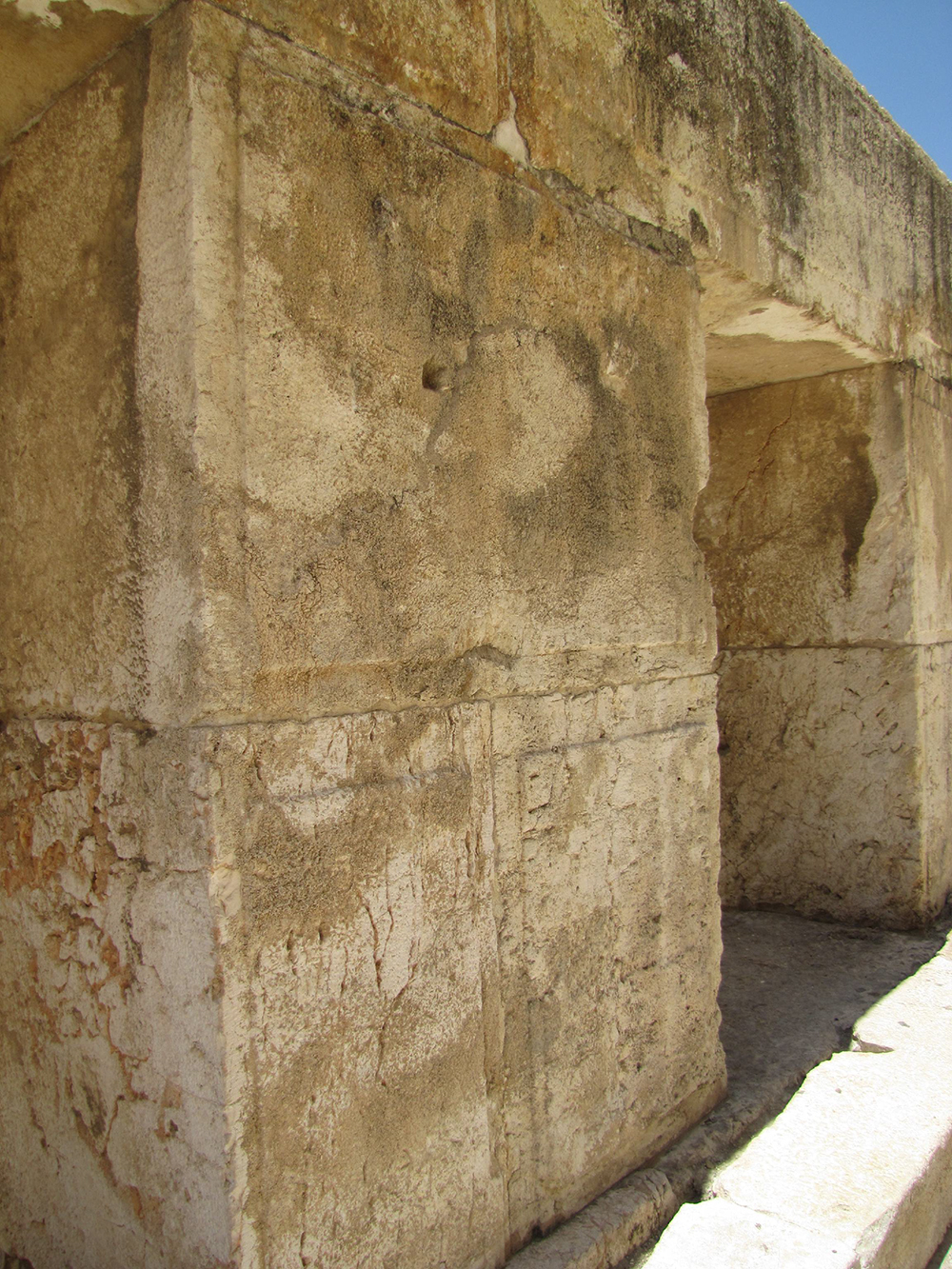
Detail of the Herodian ashlars in the door jambs and lintels of the shops.
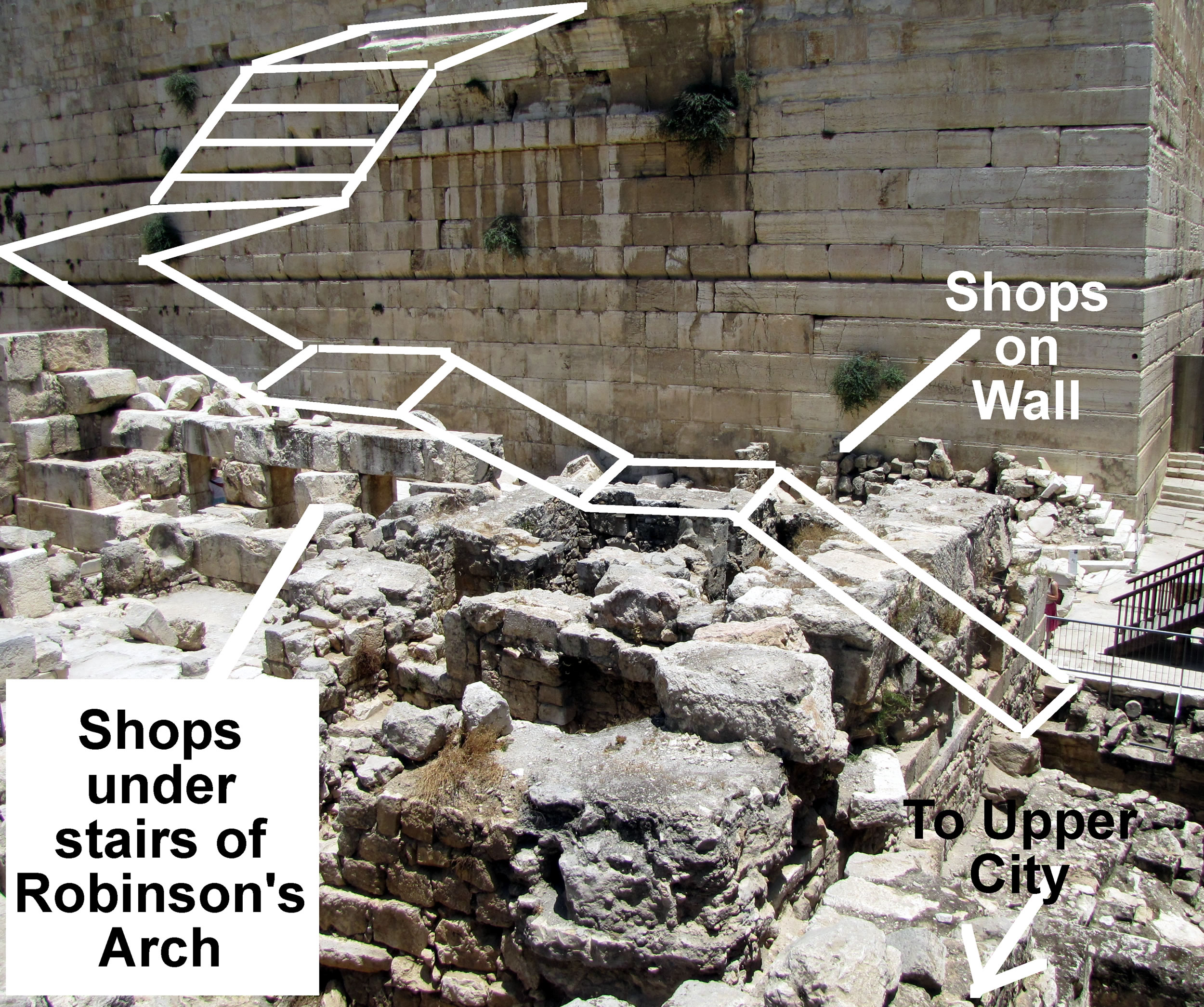
A general idea of how the stairway would have been laid out.
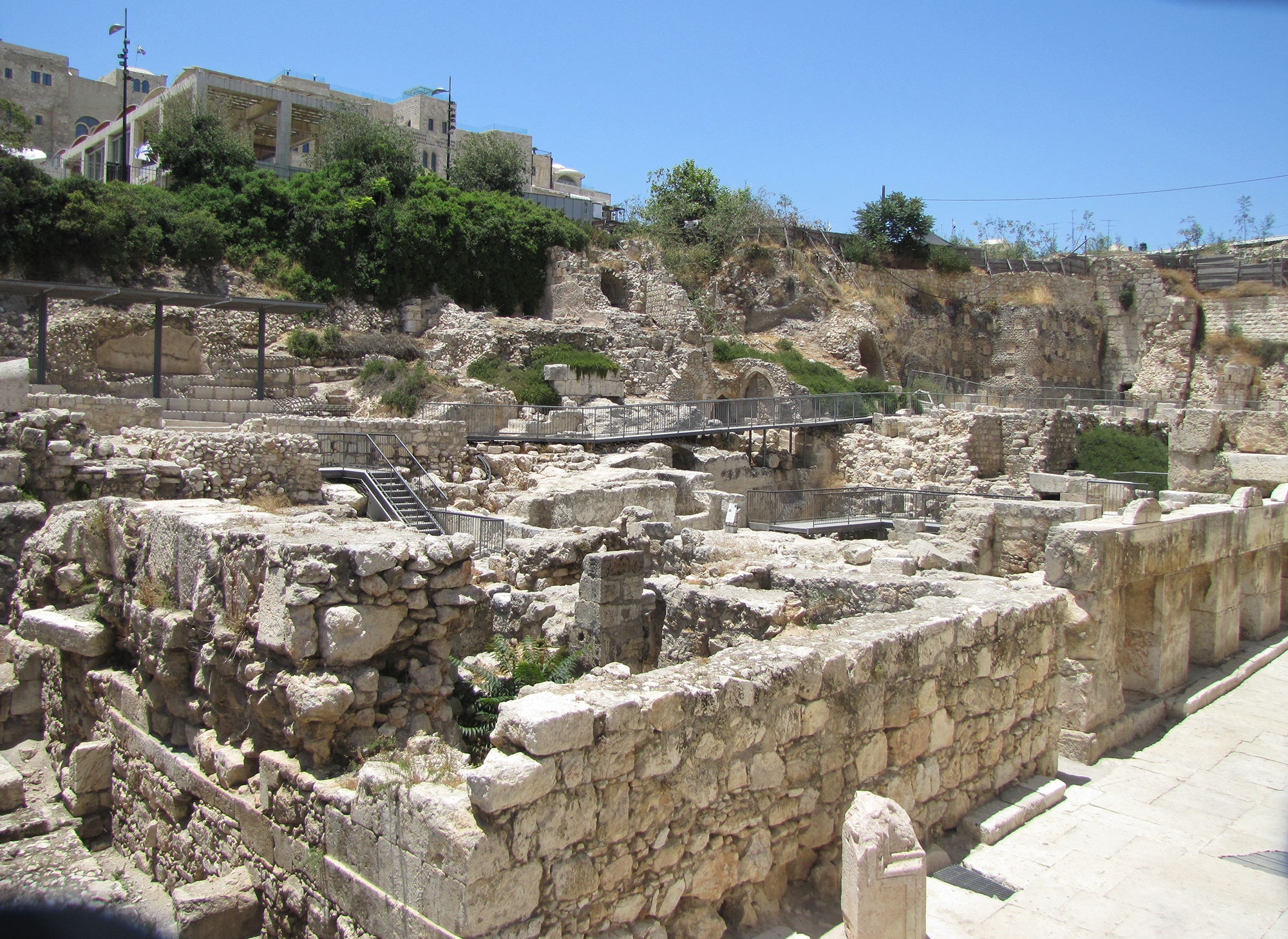
The archaeological site behind the shops, looking northwest.
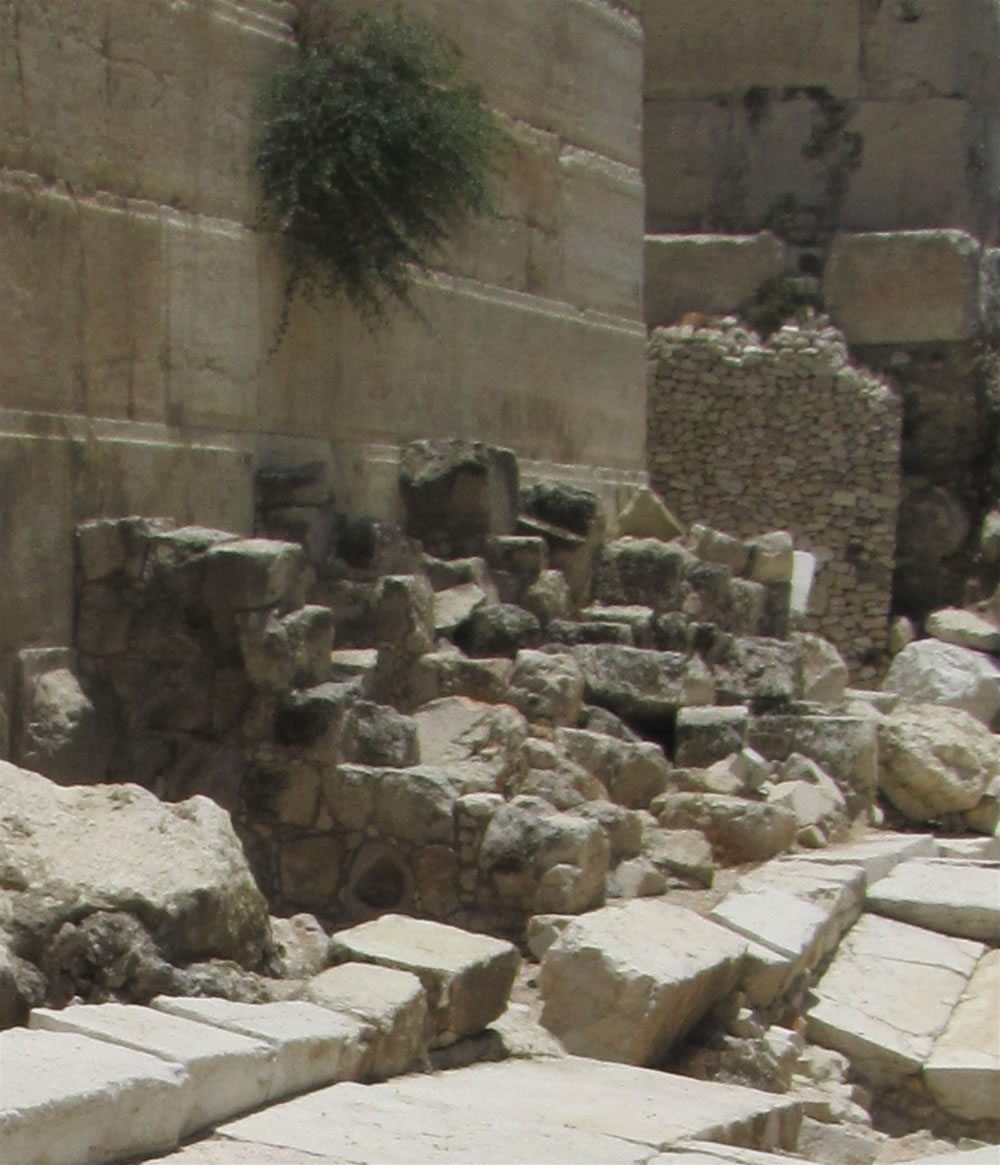
These are the remains of three or four of the shops on the east side of the pavement that were built perpendicular to the Western Wall. Crushed pavement and curbs are seen in the bottom right quadrant of the photo.
Josephus’ Account of Jerusalem’s Destruction in 70 AD:
While the holy house was on fire, every thing was plundered that came to hand, and ten thousand of those that were caught were slain...children, and old men, and profane persons, and priests were all slain in the same manner; so that this war went round all sorts of men, and brought them to destruction, and as well those that made supplication for their lives, as those that defended themselves by fighting. The flame was also carried a long way, and made an echo, together with the groans of those that were slain. ...Nor can one imagine any thing either greater or more terrible than this noise; for there was at once a shout of the Roman legions, who were marching all together, and a sad clamor of the seditious, who were now surrounded with fire and sword....Yet was the misery itself more terrible than this disorder; for one would have thought that the hill itself, on which the temple stood, was seething hot, as full of fire on every part of it, that the blood was larger in quantity than the fire, and those that were slain more in number than those that slew them; for the ground did no where appear visible, for the dead bodies that lay on it; but the soldiers went over heaps of those bodies, as they ran upon such as fled from them....As for the priests, some of them plucked up from the holy house the spikes (18) that were upon it, with their bases, which were made of lead, and shot them at the Romans instead of darts. But then as they gained nothing by so doing, ...Now the Romans, judging that it was in vain to spare what was round about the holy house, burnt all those places, as also the remains of the cloisters and the gates, two excepted; the one on the east side, and the other on the south; both which, however, they burnt afterward. They also burnt down the treasury chambers, in which was an immense quantity of money, and an immense number of garments, and other precious goods ...before Caesar had determined any thing about these people, or given the commanders any orders relating to them, the soldiers were in such a rage, that they set that cloister on fire; by which means it came to pass that some of these were destroyed by throwing themselves down headlong, and some were burnt in the cloisters themselves. Nor did any one of them escape with his life. A false prophet was the occasion of these people's destruction, who had made a public proclamation in the city that very day, that God commanded them to get upon the temple, and that there they should receive miraculous signs of their deliverance. Now there was then a great number of false prophets suborned by the tyrants to impose on the people, who denounced this to them, that they should wait for deliverance from God; and this was in order to keep them from deserting, and that they might be buoyed up above fear and care by such hopes... Thus were the miserable people persuaded by these deceivers, and such as belied God himself.
- Wars of the Jews, book VI, chapter Vver the doorways) of these shops provided support for Robinson’s Arch, which in turn supported the staircase that led to the southwestern gate of the Temple Mount.
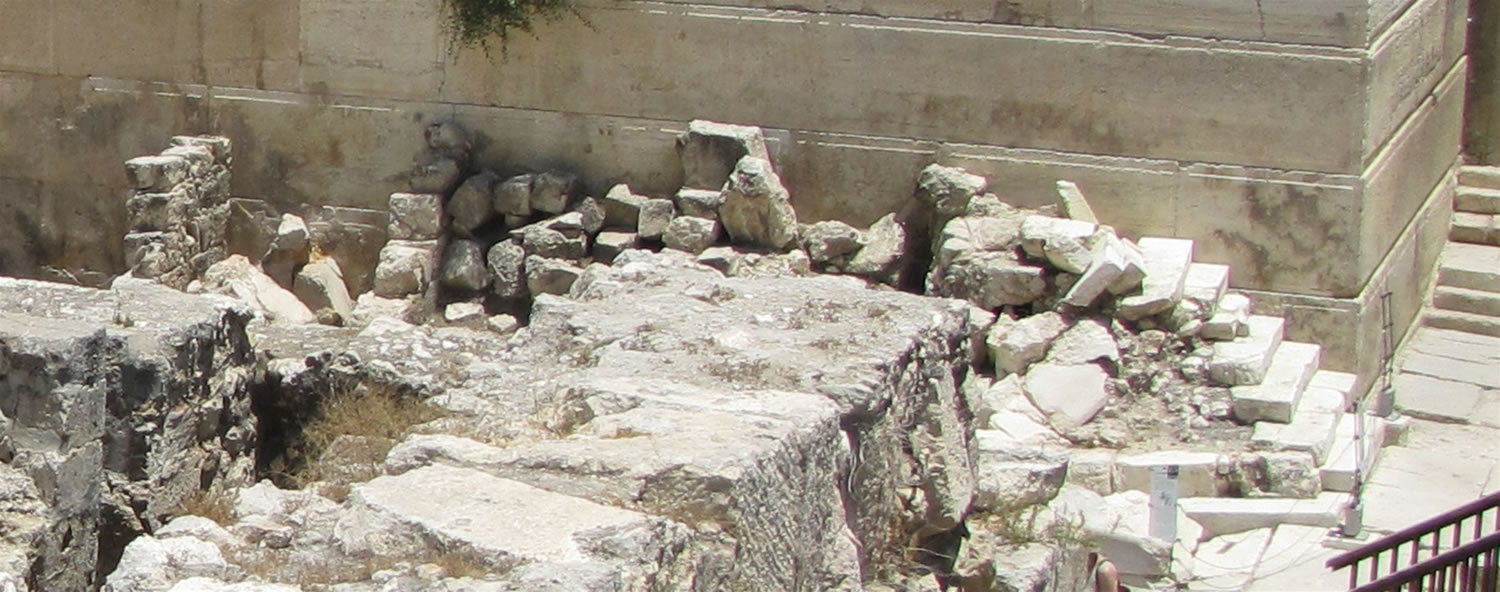
A view from above looking at the southwest corner of the Western Wall. Notice the shops along the Western Wall and the stairs that begin at the base of the southwest corner and go over the top of the shops.
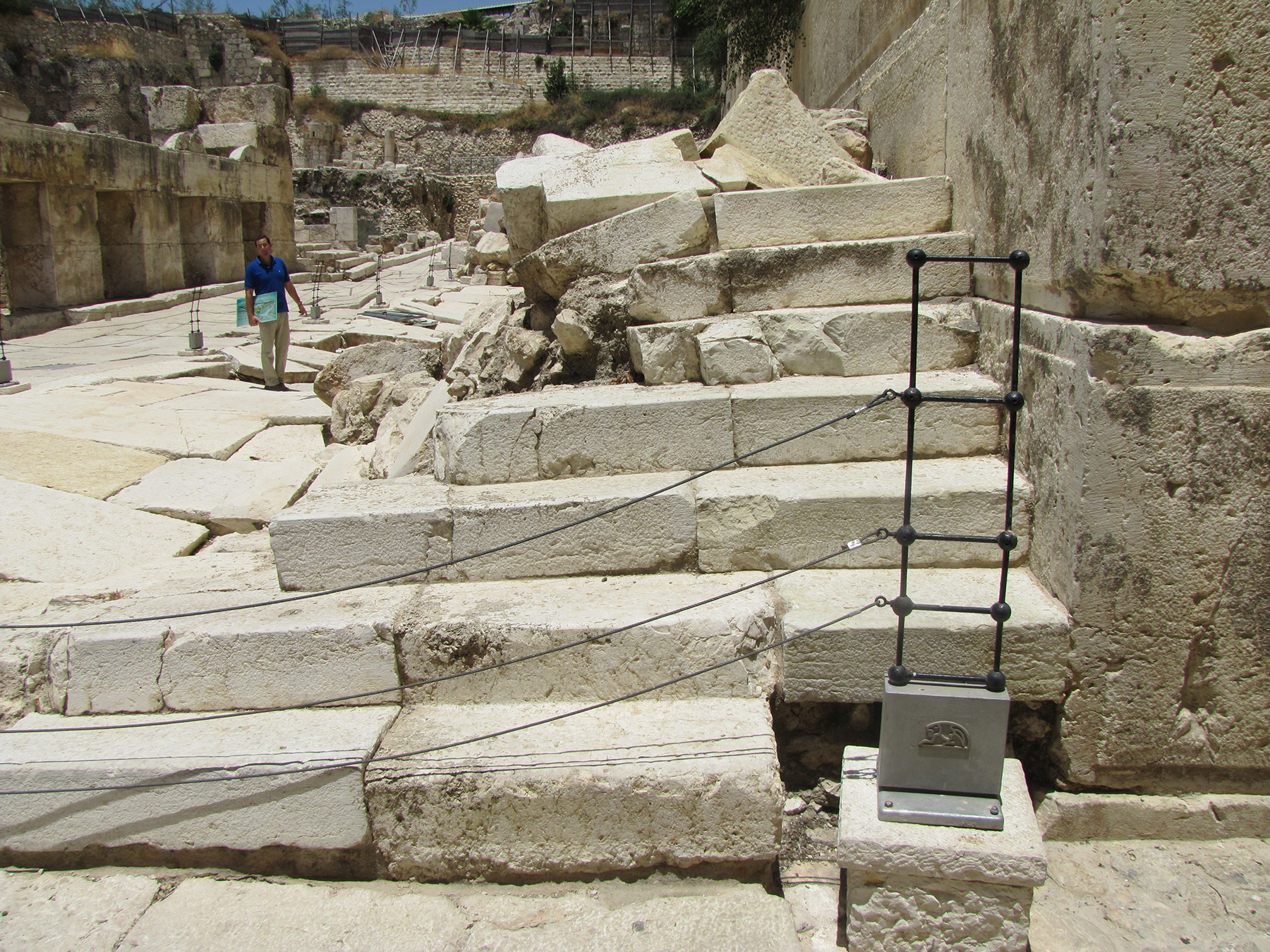
A close up of the stairs that go to the top of the shops on the east side of the road. The shops on the west side can be seen to the left of the road.
Now as soon as the army had no more people to slay or to plunder, because there remained none to be the objects of their fury, (for they would not have spared any, had there remained any other work to be done,) Caesar gave orders that they should now demolish the entire city and temple, but should leave as many of the towers standing as were of the greatest eminency; that is, Phasaelus, and Hippicus, and Mariamne; and so much of the wall as enclosed the city on the west side. This wall was spared, in order to afford a camp for such as were to lie in garrison, as were the towers also spared, in order to demonstrate to posterity what kind of city it was, and how well fortified, which the Roman valor had subdued; but for all the rest of the wall, it was so thoroughly laid even with the ground by those that dug it up to the foundation, that there was left nothing to make those that came thither believe it had ever been inhabited. This was the end which Jerusalem came to by the madness of those that were for innovations; a city otherwise of great magnificence, and of mighty fame among all mankind. But Caesar resolved to leave there, as a guard, the tenth legion, with certain troops of horsemen, and companies of footmen. - Josephus, Wars of the Jews, book VII, chapter I.